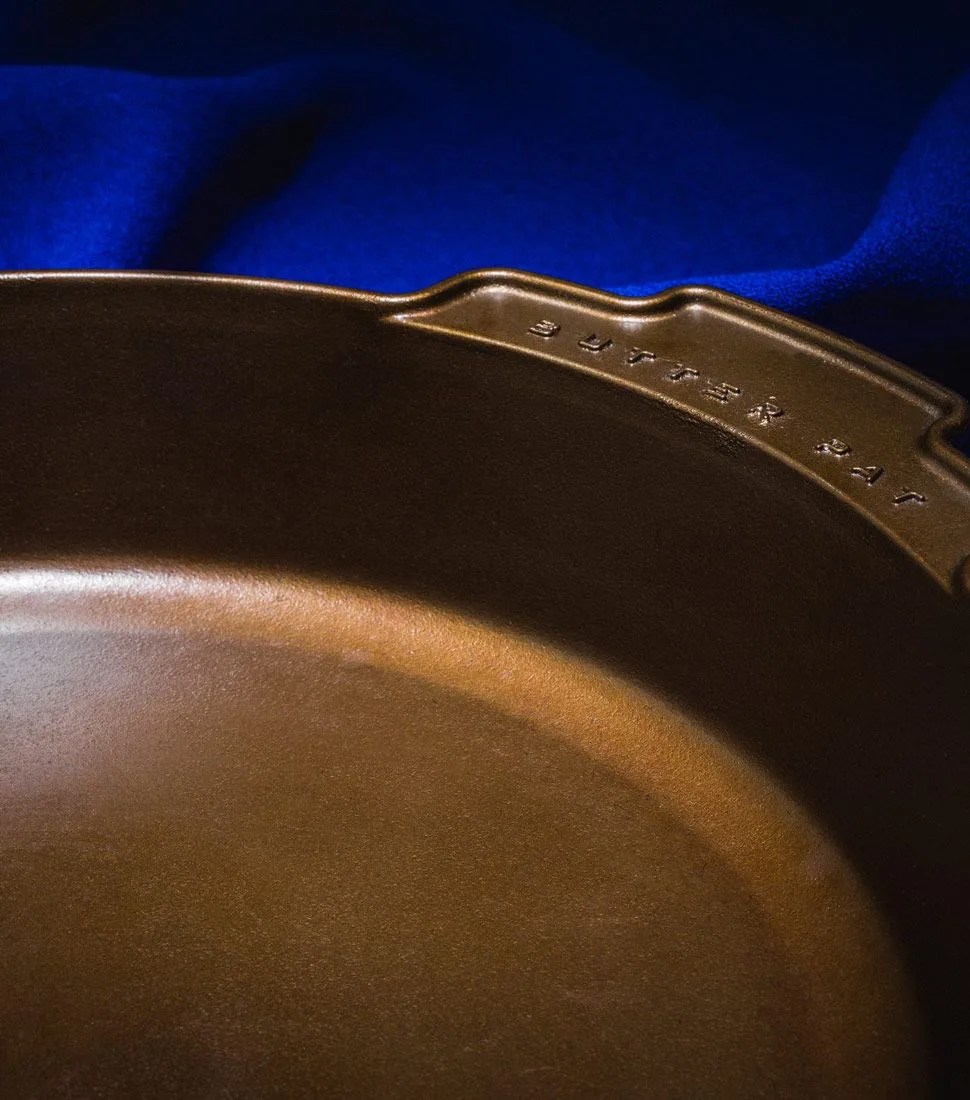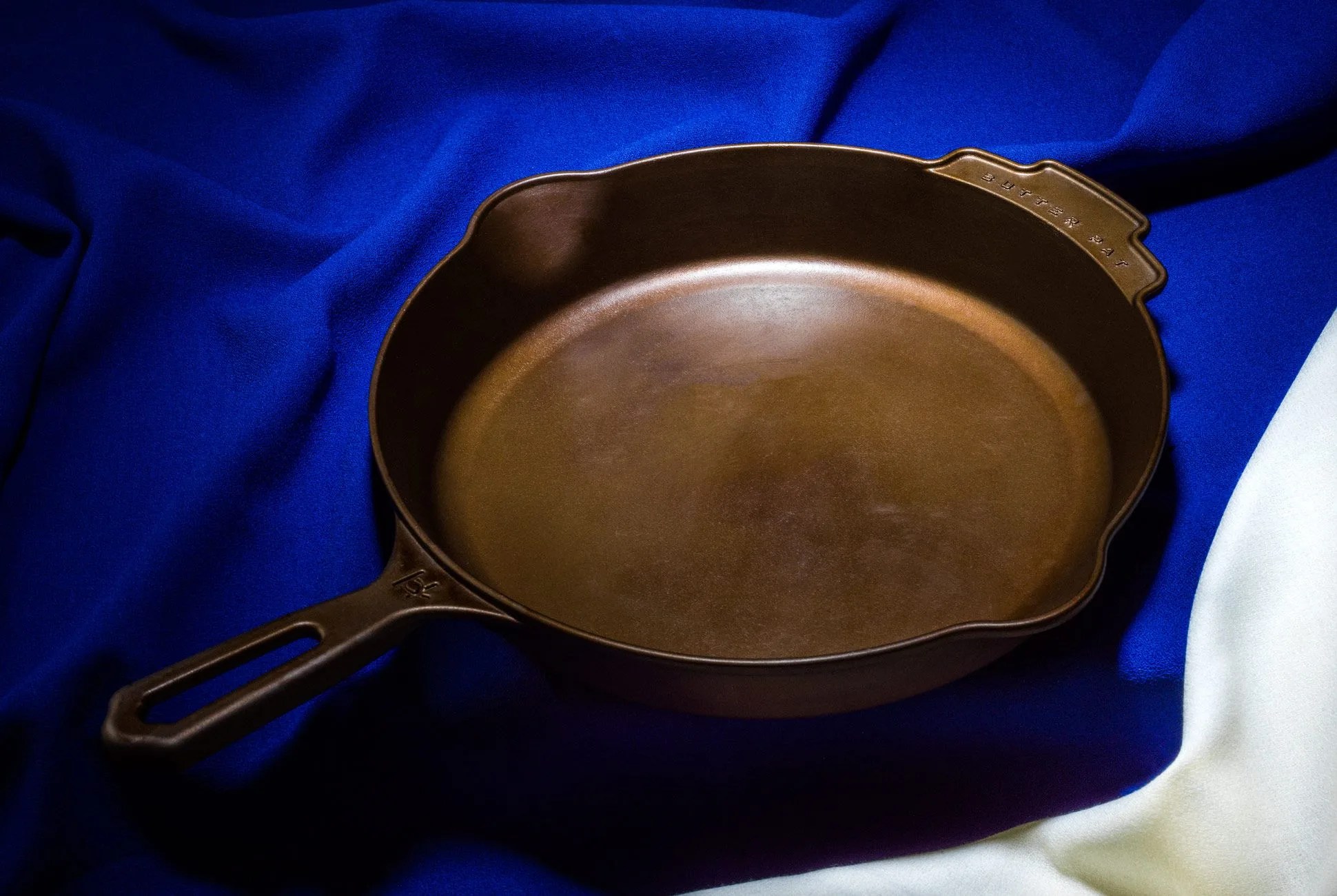The virtues of cast-iron cooking have been extolled and sermonized plenty, but, for posterity’s sake, let’s briefly rehash: it holds heat tremendously well, it will, in all likelihood, outlive you and everyone around you and it can cook just about anything.
If this feels like common knowledge, it’s important, too, to consider what cast-iron cookware is not: namely, a sandpapery, pitch black, two-handed battle to prevent food from sticking. This belief stems from the introduction of large-scale industrial casting, which cuts the corners that cookware from yesteryear wouldn’t.
Butter Pat Industries, which started selling skillets in 2016, doesn’t cut corners. In fact, its skillets have more in common with those from 1918 than it does skillets from 2018.
The brilliance of a Butter Pat skillet is front and center. It’s really smooth and bears no machine marks; that’s because the brand casts each pan by hand. This affords it a near-perfect non-stick cooking surface out of the box but also differentiates Butter Pat from other cast-iron startups that use machines to mill surfaces down to a smooth state.
 Hasselblad H6D
Hasselblad H6DNow the benefit of Butter Pat’s method of achieving non-stick rapture is two-fold: the pieces are cast into a consistent, finished state (apart from seasoning), meaning the brand can cast thinner, and therefore lighter, cookware. The 10-inch “Heather” skillet is a hair over 4.5 pounds, shedding about a pound from your typical skillet of that size (the hollowed-out handle is also partly to thank here).
Beyond that, Butter Pat’s skillets, which also come in 12- and 14-inch variants, utilize smartly-flared and sloped walls, which makes for more forgiving angles to flip food at. Smaller details like pour spouts for draining liquid and easier cleaning and a comfortable-to-grip front tab also deserve recognition.
